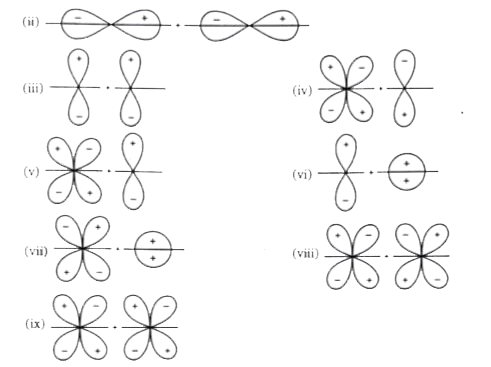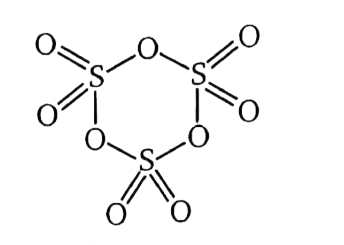SUBJECTIVE PROBLEMS from VK JAISWAL CHEMISTRY Chapter 1 CHEMICAL BONDING (ADVANCED) for Class 12
| Class 12 | CHEMISTRY |
| Chapter | CHEMICAL BONDING (ADVANCED) |
| VK JAISWAL CHEMISTRY | SUBJECTIVE PROBLEMS |
| Medium | English |
| Academic Year | 2023-2024 |
Question 1
There are two groups of compounds A and B. Groups A contains three compounds Px4,Qy3,Rz2. Groups B also contains three compounds Sx4,Ty3,Uz2. Hybridization of each central atom of group A compounds is same as that of iodine in IBrCl− while in group B compounds it is same as that of iodine IBrCl+. Substituents X, Y and Z exhibit covalency of one in ground state. Then find the value of x/y.
Where, x and y are total number of lone pair present at central atoms of compounds of group A and B respectively.View SolutionQuestion 2
Consider the following three compounds (i)AXn−2n, (ii)AX3n and (ii)AXn+4n, where central atom A is 15th group element and their maximum covalency is 3n. If total number of proton in surrounding atom X is n and value of n is one, then calculate value of x3+y2+z2 . (where x, y and z are total number of lone pair at central atom in compounds (i), (ii) and (iii) respectively.View SolutionQuestion 3
Condsider the following combination of atomic orbitals :
combinding orbitals (internuclear axis ) Combindig orbitals (internuclear axis).
(i) s+px(x) (ii)dxy+dxy(x) (iii)dxy+Px(z) (iv)s+s(z) (v)dyz+dyz(x) (vi)px+px(z) (vii)dz2+dz2(z) (viii)dxy+dxy(z) (ix)px+px(y) (x)s+pz(x)
Then calculate value of a2+b2+2cd. (where a=σM.O.,b=πM.O.,C=δM.O.,d=non-bonding M.O.)View SolutionQuestion 4
Consider the following six changes
(i)NO→NO+ (ii)O−2→O2−2 (iii) O2→O+2 (iv)NO+→NO− (v) NO+→NO2+ (vi) CO→CO+
Then calculate value of c2−b2−a2", where a, b and c are total number of transformation in which magnetic property will be changed, bond order increase and bond order decrease respectively. View SolutionQuestion 6
Consider the following elements A, B, C and D and their outer electronic configurtions are ns2np1,ns2np3,ns2np4andns2np5 respectively. Element E also has same outer electronic configuration like D but shows only single oxidation state(-1). If element A, B , C and D belong to same period as that of sodium. Consider the following compounds.
(i)CE4 (ii)BD2E3 (iii)DE3 (iv)DE2 (v)BD3E2 (vi)C2E2 (vii)DE (viii)A2D6.
Then calculate the value of x+y, (where x and y are total number of polar and non-polar compounds).View SolutionQuestion 19
Consider two covalent compounds ALn1andBLn2, if central atom (A) of first compounds has total six electron pairs and central atom (B) of second compound contains total five electron pairs in its valence shell and both compounds are planar and non-polar then calculate value of experssion (n1−n2)2.
[Where n1andn2 are number of monovalent surrounding atom (L)]View SolutionQuestion 25
Consider the following compounds :
(i)IF5 (ii)ClI−4 (iii)XeO2F2 (iv)NH−2
(v)BCl3 (vi)BeCl2 (vii)AsCl+4 (viii)B(OH)3
(ix) NO−2 (x)ClO+2
Then calculate value of "x+y-z", here, x,y and z are total number of compounds in given compounds in which central atom used their all three p-orbitals, only two p-orbitals and only one p-orbital in hybridisation respectively .View SolutionQuestion 28
Consider the following oxyanions:
PO3−4,P2O4−6,SO2−4,MnO−4,CrO2−4,S2O2−5,S2O2−7
and find the value of R+Q-P
where P-number of oxy anions having three equivalent X-O bonds per central atom
Q=number of oxy anions having two equivalent X-O bonds per central atom.
R=Number of oxy anions having four equivalent X-O bonds per central atom.View SolutionQuestion 29
Consider the following three compounds (i)AXn−2n, (ii)AX3n and (ii)AXn+4n, where central atom A is 15th group element and their maximum covalency is 3n. If total number of proton in surrounding atom X is n and value of n is one, then calculate value of x3+y2+z2 . (where x, y and z are total number of lone pair at central atom in compounds (i), (ii) and (iii) respectively.View SolutionQuestion 30
Consider the following compounds and Calculate the value of (P2−Q2R+S)
(i)BeF (ii)ICl (iii)BeF3 (iv)BrF5 (v)ICl3 (vi)IF3 (vii)IF5 (viii)IF7,
Where P: Total number of polar compounds.
Q: Total number of planar compounds.
R: Total number of non-polar compounds.
S: Total number of non-planar compounds.
View SolutionQuestion 31
Consider the following compounds
(1)H3CF (2)H2CF2 (3)CH4 (4)H3CCF3 (5)CH3CH3 (6)C2H4
and calculate value of Y+X, (where X is the total number of compounds which have H−C−H bond angles equal to 109∘28' and Y is the total number of compounds which have H−C−H bond angles greater than 109∘28' and less than 120∘View SolutionQuestion 33
Following compounds A and B have similar structure with delocalization of π-electrons system. (A)(PNCl2)x/2 (B)(CH)x
If value of x is 6, then calculate value of "P+Q", where 'P' is total no. of σ-bonds in compounds A and B and 'Q' is total no. of π bonds in compounds A and B. View SolutionQuestion 34
The hybridization of central atoms of compounds A, B, C and D are sp3d,sp3,sp2andsp respectively. If compounds A and D have same shape like I−3 and compounds B and C have same shape like water structure. Then calculate value of "P+Q+R+S", where P, Q, R, and S are number of lone pairs on central atoms of compounds A, B, C and D respectively.View SolutionQuestion 36
There are two groups of compounds A and B. Groups A contains three compounds Px4,Qy3,Rz2. Groups B also contains three compounds Sx4,Ty3,Uz2. Hybridization of each central atom of group A compounds is same as that of iodine in IBrCl− while in group B compounds it is same as that of iodine IBrCl+. Substituents X, Y and Z exhibit covalency of one in ground state. Then find the value of x/y.
Where, x and y are total number of lone pair present at central atoms of compounds of group A and B respectively.View SolutionQuestion 37
Consider the following three compounds (i)AXn−2n, (ii)AX3n and (ii)AXn+4n, where central atom A is 15th group element and their maximum covalency is 3n. If total number of proton in surrounding atom X is n and value of n is one, then calculate value of x3+y2+z2 . (where x, y and z are total number of lone pair at central atom in compounds (i), (ii) and (iii) respectively.View SolutionQuestion 38
Condsider the following combination of atomic orbitals :
combinding orbitals (internuclear axis ) Combindig orbitals (internuclear axis).
(i) s+px(x) (ii)dxy+dxy(x) (iii)dxy+Px(z) (iv)s+s(z) (v)dyz+dyz(x) (vi)px+px(z) (vii)dz2+dz2(z) (viii)dxy+dxy(z) (ix)px+px(y) (x)s+pz(x)
Then calculate value of a^(2)+b^(2)+2cs. (where a=σM.O.,b=πM.O.,C=δM.O.,d=non-bonding M.O.)View SolutionQuestion 39
Consider the following sic changes
(i)NO→NO+ (ii)O−2→O2−2 (iii) O2→O+2 (iv)NO+→NO− (v) NO+→NO2+ (vi) CO→CO+
Then calculate value of c2−b2−a2", where a, b and c are total number of transformation in which magnetic property will be changed, bond increase and bond order decrease respectively. View SolutionQuestion 41
Consider the following elements A, B, C and D and their outer electronic configurtions are ns2np1,ns2np3,ns2np4andns2np5 respectively. Element E also has same outer electronic configuration like D but shows only single oxidation state(-1). If element A, B , C and D belong to same period as that of sodium. Consider the following compounds.
(i)CE4 (ii)BD2E3 (iii)DE3 (iv)DE2 (v)BD3E2 (vi)C2E2 (vii)DE (viii)A2D6.
Then calculate the value of x+y, (where x and y are total number of polar and non-polar compounds).View SolutionQuestion 54
Consider two covalent compounds ALn1andBLn2, if central atom (A) of first compounds has total six electron pairs and central atom (B) of second compound contains total five electron pairs in its valence shell and both compounds are planar and non-polar then calculate value of experssion (n1−n2)2.
[Where n1andn2 are number of monovalent surrounding atom (L)]View SolutionQuestion 56
There are some arrangements of atomic orbitals which are given below:

 Then calculate the value of "QtimesR-P'" where P, Q and R are no. of arrangements which give bonding molecular orbitals (positive overlap), antibonding molecular orbitals (negative overlap) and non-bonding molecular orbitals (zero overlap) respectively.View Solution
Then calculate the value of "QtimesR-P'" where P, Q and R are no. of arrangements which give bonding molecular orbitals (positive overlap), antibonding molecular orbitals (negative overlap) and non-bonding molecular orbitals (zero overlap) respectively.View SolutionQuestion 61
Consider the following compounds :
(i)IF5 (ii)ClI−4 (iii)XeO2F2 (iv)NH−2
(v)BCl3 (vi)BeCl2 (vii)AsCl+4 (viii)B(OH)3
(ix) NO−2 (x)ClO+2
Then calculate value of "x+y-z", here, x,y and z are total number of compounds in given compounds in which central atom used their all three p-orbitals, only two p-orbitals and only one p-orbital in hybridisation respectively .View SolutionQuestion 64
Consider the following oxyanions :
PO3−4,P2O4−6,SO2−4,MnO−4,CrO2−4,S2O2−5,S2O2−7 and find the value of R+Q−P
where
P=Number of oxy aions having three equivalent
X−O bonds per central atom
O=Number of oxy anions having two equivalent
X−O bonds per central atom
R=Number of oxy anions having four equivalent
X−O bonds per central atomView SolutionQuestion 65
Consider the following three compounds (i)AXn−2n, (ii)AX3n and (ii)AXn+4n, where central atom A is 15th group element and their maximum covalency is 3n. If total number of proton in surrounding atom X is n and value of n is one, then calculate value of x3+y2+z2 . (where x, y and z are total number of lone pair at central atom in compounds (i), (ii) and (iii) respectively.View SolutionQuestion 66
Consider the following compounds and Calculate the value of (P2−Q2R+S)
(i)BeF (ii)ICl (iii)BeF3 (iv)BrF5 (v)ICl3 (vi)IF3 (vii)IF5 (viii)IF7,
Where P: Total number of polar compounds.
Q: Total number of planar compounds.
R: Total number of non-polar compounds.
S: Total number of non-planar compounds.
View SolutionQuestion 67
Consider the following compounds
(1)H3CF (2)H2CF2 (3)CH4 (4)H3CCF3 (5)CH3CH3 (6)C2H4
and calculate value of Y+X, (where X is the total number of compounds which have H−C−H bond angles equal to 109∘28' and Y is the total number of compounds which have H−C−H bond angles greater than 109∘28' and less than 120∘View SolutionQuestion 69
Following compounds A and B have similar structure with delocalization of π-electrons system. (A)(PNCl2)x/2 (B)(CH)x
If value of x is 6, then calculate value of "P+Q", where 'P' is total no. of σ-bonds in compounds A and B and 'Q' is total no. of π bonds in compounds A and B. View SolutionQuestion 70
The hybridization of central atoms of compounds A, B, C and D are sp3d,sp3,sp2andsp respectively. If compounds A and D have same shape like I−3 and compounds B and C have same shape like water structure. Then calculate value of "P+Q+R+S", where P, Q, R, and S are number of lone pairs on central atoms of compounds A, B, C and D respectively.View Solution


